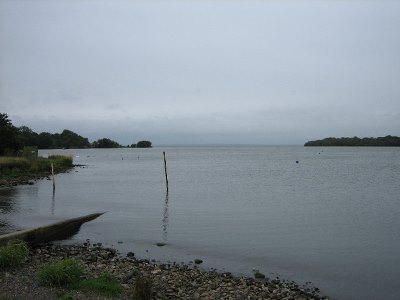
Ireland’s largest fresh-water lake, Lough Neagh (also the largest lake across the islands of Ireland and Britain), is on the edge of ecological disaster. The reasons are a mixture of greed from private business, and inaction from the public authorities charged with enforcing environmental protection. Since the start of this century, there has been a minimum 80% fall in winter migrating birds on the Lough. There has been a minimum two-thirds collapse in insect and snail life. There are fears fish stocks will collapse completely.
The 20 miles (32 km) long and 9 miles (14 km) wide lough’s water is publicly owned. However, in a bizarre hangover from feudalism, the Shaftesbury Estate owns the bed and foreshore. Four hundred years ago the then King gave these to Sir Arthur Chichester during the Plantation of Ulster [The Plantation of Ulster was the colonisation of Ulster – a province of Ireland – – by people from Britain during the reign of King James 1]. In the 19th Century they passed to the Shaftesbury Estate, based in Dorset.
This summer, toxic algae has been a big and visible problem. Dogs have drunk water from the Lough and died. Algae floated down the Bann to the sea and forced the closure of beaches in Co. Derry.
The Lough supplies 40% of the North’s drinking water. The algae results from run-offs from industrial scale agriculture. Agri-industry is a dangerously influential section of capitalism in the North. Neither senior public servants nor the main political parties will dare stand up to it.
Sand dredging is another cause of huge damage to the Lough. The dredging companies receive millions in tax relief. Over the past two years there were 49 known breaches of conditions. The Shaftesbury Estate receives a levy for each tonne of sand. The dredging has caused dead zones in the Lough. These will take centuries to recover. There are scars 56 feet deep in the Lough bed. In 2017 the Court of Appeal ruled the dredging should be reviewed. Despite that, in 2020 Environment Minister Nichola Mallon of the SDLP permitted continued dredging.
The destruction of Lough Neagh is a brutal example of how capitalism exploits and destroys nature with no regard for the future. To stop this threat the lough in its totality must be brought into public ownership so it can be saved.
Special financial appeal to all readers of socialistworld.net |
Support building alternative socialist media Socialistworld.net provides a unique analysis and perspective of world events. Socialistworld.net also plays a crucial role in building the struggle for socialism across all continents. Capitalism has failed! Assist us to build the fight-back and prepare for the stormy period of class struggles ahead. Please make a donation to help us reach more readers and to widen our socialist campaigning work across the world. |
Donate via Paypal |
| M | T | W | T | F | S | S |
|---|---|---|---|---|---|---|
| 1 | ||||||
| 2 | 3 | 4 | 5 | 6 | 7 | 8 |
| 9 | 10 | 11 | 12 | 13 | 14 | 15 |
| 16 | 17 | 18 | 19 | 20 | 21 | 22 |
| 23 | 24 | 25 | 26 | 27 | 28 | 29 |
| 30 | 31 | |||||

